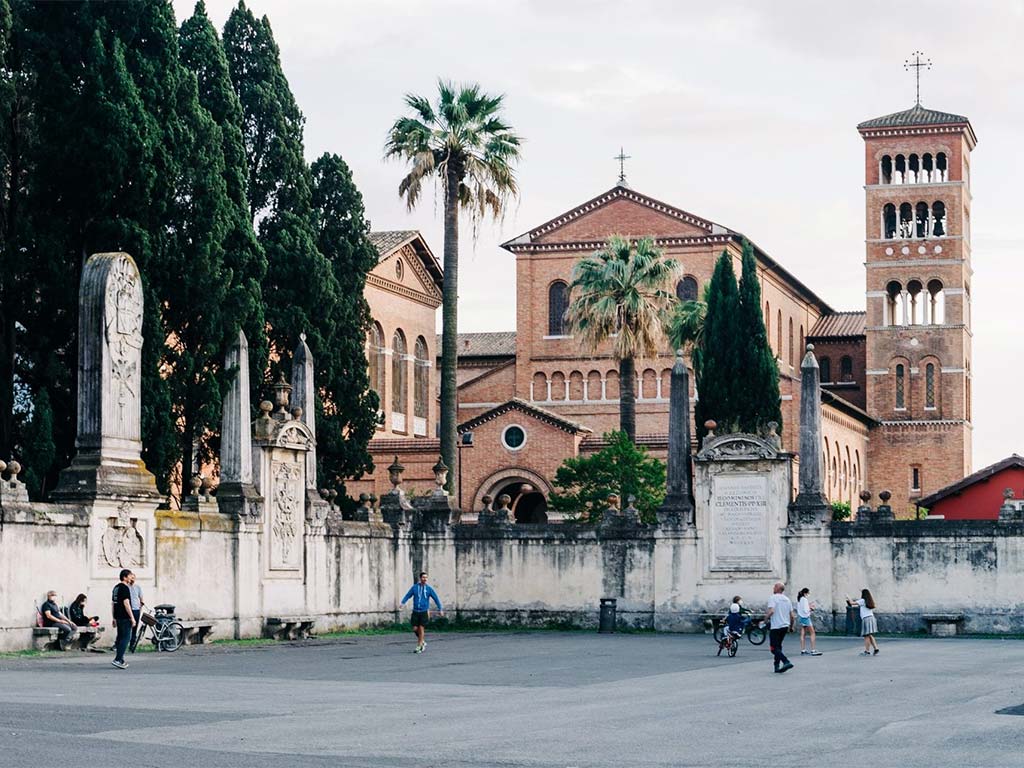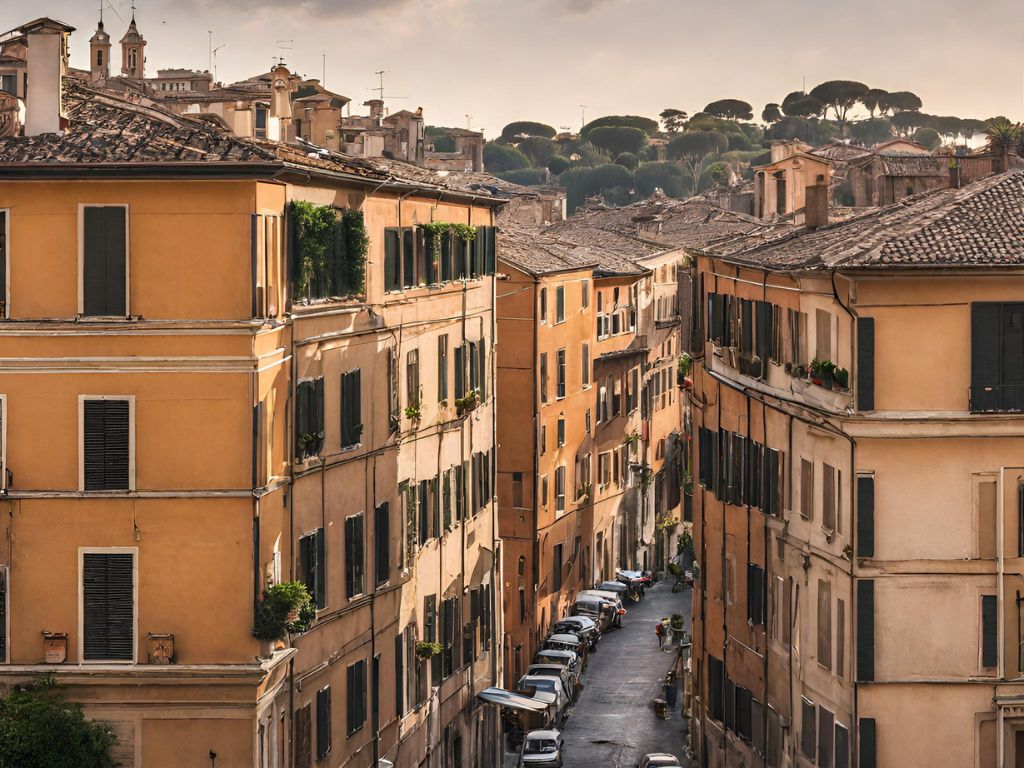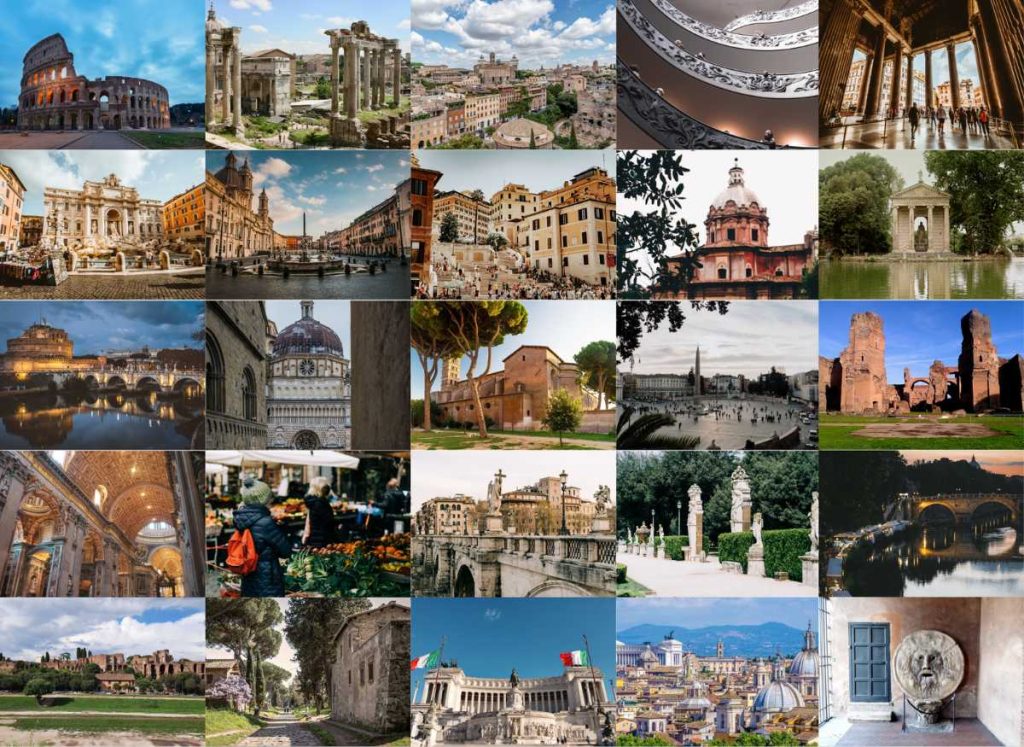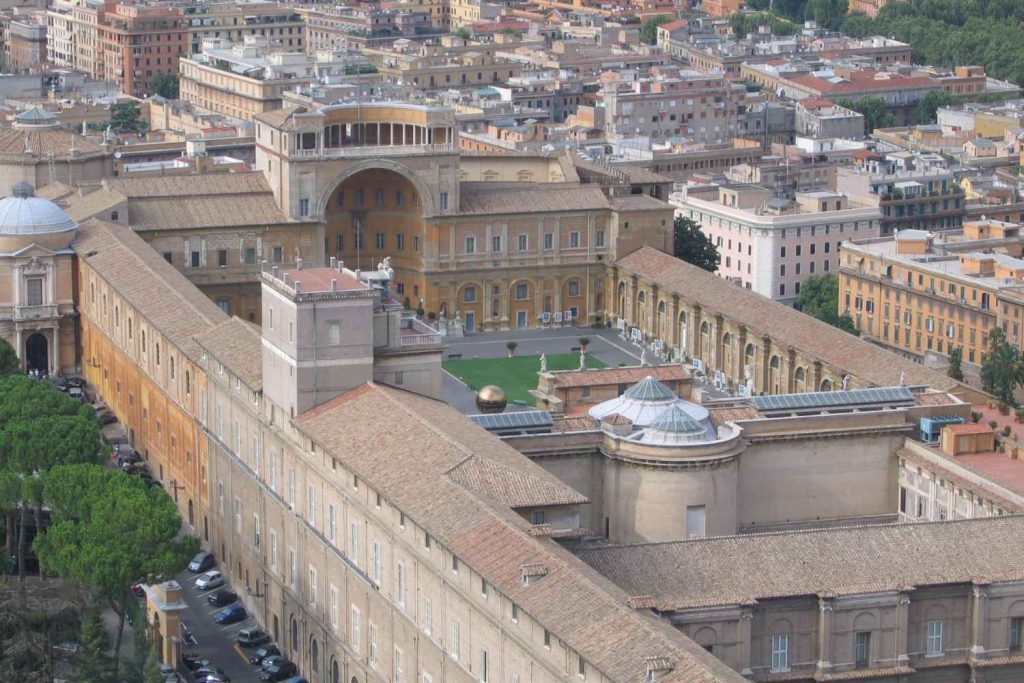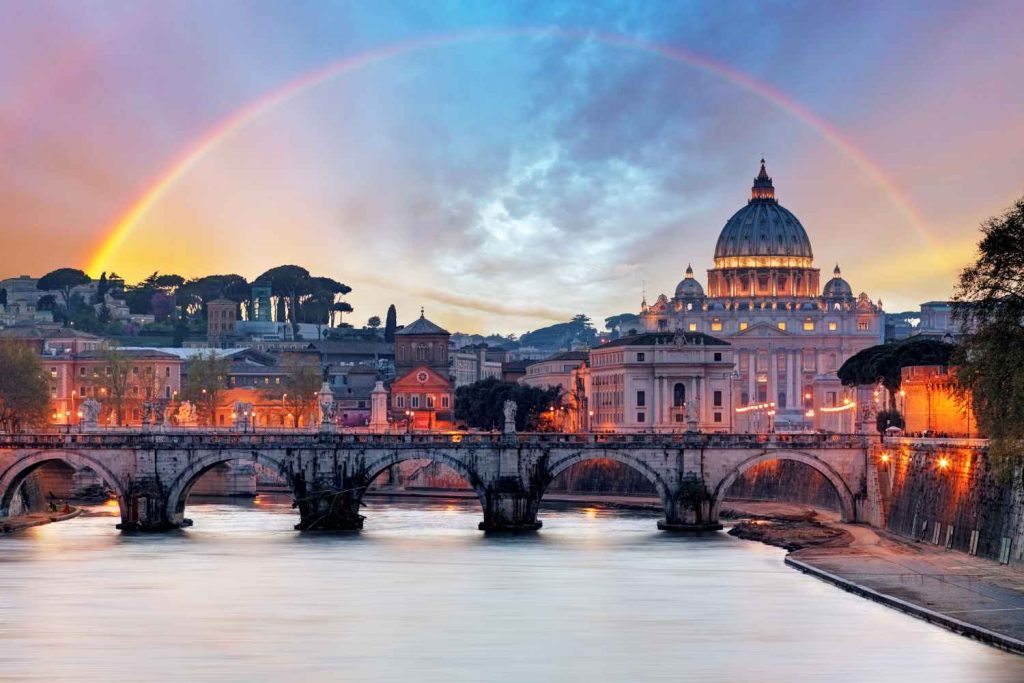Escape the hustle and bustle of Rome and immerse yourself in the serene beauty of Aventino, where history and tranquillity await your exploration.
Rome, often referred to as the Eternal City, is a bustling metropolis that never sleeps. With its iconic landmarks, historical treasures, and vibrant street life, it’s a city that captivates the hearts of millions of tourists every year. Yet, nestled within this bustling capital of Italy, there exists a serene enclave that offers respite from the city’s constant hum. Aventino, one of Rome’s seven hills, is a quiet oasis that has managed to preserve its tranquillity amidst the chaos of modern urban life.
Aventino’s Historical Roots
Aventino, situated on the left bank of the Tiber River, has a history that dates back over two millennia. It was one of the earliest settled parts of Rome, and its name is believed to have been derived from the Latin word “Aventinus,” referring to a legendary king who was buried there. This hill has witnessed the rise and fall of empires, the construction of monumental structures, and the evolution of Roman society.
One of Aventino’s most iconic landmarks is the Circus Maximus, a colossal ancient Roman chariot racing stadium that could accommodate up to 150,000 spectators. While the Circus Maximus is no longer the site of chariot races, it serves as a reminder of Rome’s glorious past. The ruins of this structure sprawl across the Aventine hill, and they provide a fascinating glimpse into the grandeur of ancient Rome.
Aventino: A Place of Retreat
While many parts of Rome have become synonymous with bustling crowds and frenetic energy, Aventino has managed to retain its reputation as a place of retreat and contemplation. This is due in part to its geographical location, which sets it slightly apart from the city centre. As a result, Aventino offers a sense of solitude that is hard to come by in the heart of Rome.
The Orange Garden (Giardino degli Aranci)
One of Aventino’s most enchanting attractions is the Giardino degli Aranci, or the Orange Garden. As the name suggests, this garden is home to a grove of bitter orange trees that perfume the air with their sweet, citrusy scent. The garden’s terrace provides an unparalleled view of the city, with the dome of St. Peter’s Basilica dominating the skyline.
The Orange Garden is a popular spot for both locals and tourists to escape the city’s noise and crowds. Visitors can stroll along winding pathways, enjoy a picnic on the grass, or simply sit on one of the many benches and soak in the panoramic views of Rome. It’s a place where time seems to stand still, and the only sounds you’ll hear are the chirping of birds and the rustling of leaves in the gentle breeze.
The Aventine Key Hole (Il Buco della Serratura)
Another hidden gem of Aventino is the famous Aventine Keyhole, known locally as “Il Buco della Serratura.” This unassuming keyhole is actually part of the gate to the Priory of the Knights of Malta, a historic institution that dates back to the 10th century. What makes this keyhole truly special is the view it offers when you peek through it.
Looking through the keyhole, you’ll see a perfectly framed view of St. Peter’s Basilica in the distance, perfectly aligned with the garden’s meticulously trimmed hedges. It’s a surreal and enchanting sight that draws photographers and curious visitors from around the world. Finding the keyhole and experiencing this unique perspective on Rome has become a kind of urban legend in the city.
Aventino’s Artistic and Religious Heritage
Beyond its natural beauty and peaceful atmosphere, Aventino boasts a rich artistic and religious heritage. The hill is home to several churches and monuments that have played significant roles in Rome’s history.
Basilica of Santa Sabina
The Basilica of Santa Sabina is one of the oldest surviving Christian basilicas in Rome. Dating back to the 5th century, it is renowned for its simplicity and elegant architecture. The church is a prime example of early Christian design, with its graceful columns, wooden ceiling, and stunning marble doors.
What sets Santa Sabina apart, however, is not just its historical significance but also its tranquillity. As you step inside, you’ll find a peaceful sanctuary filled with the soft glow of natural light filtering through the ancient windows. The quiet interior invites contemplation and reflection, making it a perfect place to escape the bustling city outside. If you would like to dive deeper this Santa Sabina Wikipedia entry is a great place to start.
The Church of Santa Prisca
Another notable religious site on Aventino is the Church of Santa Prisca. This small but exquisite church is known for its remarkable frescoes and its connection to the early Christian martyr it is named after. Visiting Santa Prisca feels like stepping back in time, as the church has retained its original character over the centuries.
The Knights of Malta Priory
As mentioned earlier, the Knights of Malta Priory is a historic institution that has a significant presence on Aventino. The priory’s architecture and gardens are a testament to the order’s long history, and the presence of the Aventine Keyhole nearby adds an element of mystery to the area.
A Place for Art Lovers: The Aventine Hill Art Walk
Aventino isn’t just a haven for those seeking solace; it’s also a destination for art enthusiasts. The Aventine Hill Art Walk is a self-guided tour that takes you through the hill’s picturesque streets and alleys, where you’ll encounter a variety of artistic treasures.
The Protestant Cemetery (Cimitero Acattolico)
This unique cemetery is the final resting place for numerous famous artists, writers, and scholars. Among its most famous residents is the English Romantic poet John Keats, whose tombstone bears the inscription “Here lies one whose name was writ in water.” The peaceful atmosphere of the cemetery and the beautifully maintained grounds make it a contemplative and artistic space.
The Academy of France in Rome (L’Accademia di Francia a Roma)
This prestigious institution, often referred to as the French Academy in Rome, has played a vital role in nurturing and promoting the arts for centuries. While the academy itself is not typically open to the public, the surrounding area is filled with artistic inspiration. The picturesque courtyard and the stunning facade of the Villa Medici, where the academy is housed, are worth a visit.
Contemporary Art Galleries
Aventino is also home to a growing number of contemporary art galleries that showcase the work of local and international artists. These galleries provide a platform for emerging talents and contribute to the neighbourhood’s vibrant artistic scene.
Culinary Delights of Aventino
No visit to Aventino would be complete without savouring the culinary delights that the area has to offer. The hill boasts a diverse array of dining options, from traditional trattorias to upscale restaurants. Here are a few gastronomic highlights:
Traditional Roman Cuisine
Aventino is a great place to sample classic Roman dishes, such as cacio e pepe (cheese and pepper pasta), carbonara, and saltimbocca. Many of the neighbourhood’s restaurants take pride in using locally sourced ingredients and preserving traditional recipes that have been passed down through generations.
Scenic Dining
Several restaurants on Aventino offer panoramic views of Rome, making for a memorable
dining experience. Whether you’re enjoying a candlelit dinner at sunset or a leisurely brunch overlooking the city, the vistas from Aventino provide a stunning backdrop for your culinary adventures.
Hidden Gems
Aventino is also known for its hidden culinary gems, including family-run eateries and cosy cafes tucked away in quiet corners. These establishments offer a more intimate dining experience and often feature homemade dishes that capture the essence of Roman cuisine.
Aventino: A Residential Retreat
In addition to its historical and cultural attractions, Aventino is also a coveted residential area. The hill is dotted with elegant villas, charming apartments, and tree-lined streets. Its residential character is a testament to the fact that Aventino is not merely a tourist destination but a place where people choose to live and raise families.
The quiet streets and well-maintained parks make Aventino an ideal place to escape the noise and congestion of the city centre. It’s a neighbourhood where neighbours know each other, and the sense of community is strong.
Ready to call Rome home? Explore our carefully curated apartment guide, offering a glimpse into the city’s diverse residential options for a truly Roman stay for you!
The Aventine Hill: A Blend of Past and Present
As you explore Aventino, you’ll notice the harmonious coexistence of the past and present. The ancient ruins stand in contrast to the modern residences, while the centuries-old churches share the hill with contemporary art galleries. This blend of history and modernity gives Aventino its unique character and charm.
Aventino’s ability to preserve its tranquillity while being part of a bustling city is a testament to the timeless allure of this quiet oasis. Whether you’re seeking solace, artistic inspiration, or a taste of authentic Roman life, Aventino invites you to discover its hidden treasures and savour the serenity that has enchanted visitors for centuries.
In the heart of Rome, Aventino remains a sanctuary of stillness, a living testament to the enduring beauty of the Eternal City. It is a place where the past whispers softly to the present, and where the city’s relentless pulse gives way to the tranquil rhythm of history and nature. Aventino is, indeed, Rome’s quiet oasis—an eternal haven amidst the eternal city.
So, next time you find yourself in Rome, take a leisurely stroll up the Aventine Hill. Let the scents of orange blossoms, the echoes of ancient chariot races, and the breathtaking views of the city remind you that amidst the hustle and bustle, there’s always a quiet oasis waiting to be discovered.
Curious about other captivating neighbourhoods in Rome like Trastevere, Campo de’ Fiori, Testaccio, and Monti? Dive into our comprehensive guides and unlock the secrets of these enchanting districts.
Unlocking Trastevere’s Hidden Gems: A Guide to Must-See Attractions and Activities
Campo de’ Fiori Market: The Heartbeat of Rome’s Food Culture
Testaccio Unveiled: A Guide to Cultural and Culinary Odyssey in Rome
Monti, Rome: An Irresistible Shopper’s Paradise with Mercato Monti
More articles you might like...
You can find more great Rome content in the following categories;
All about Vatican City Commonly Asked Rome Questions Rome Accommodation Rome Food and Drink Rome History and Culture Rome Neighbourhoods Rome Tours and Must-See Attractions
